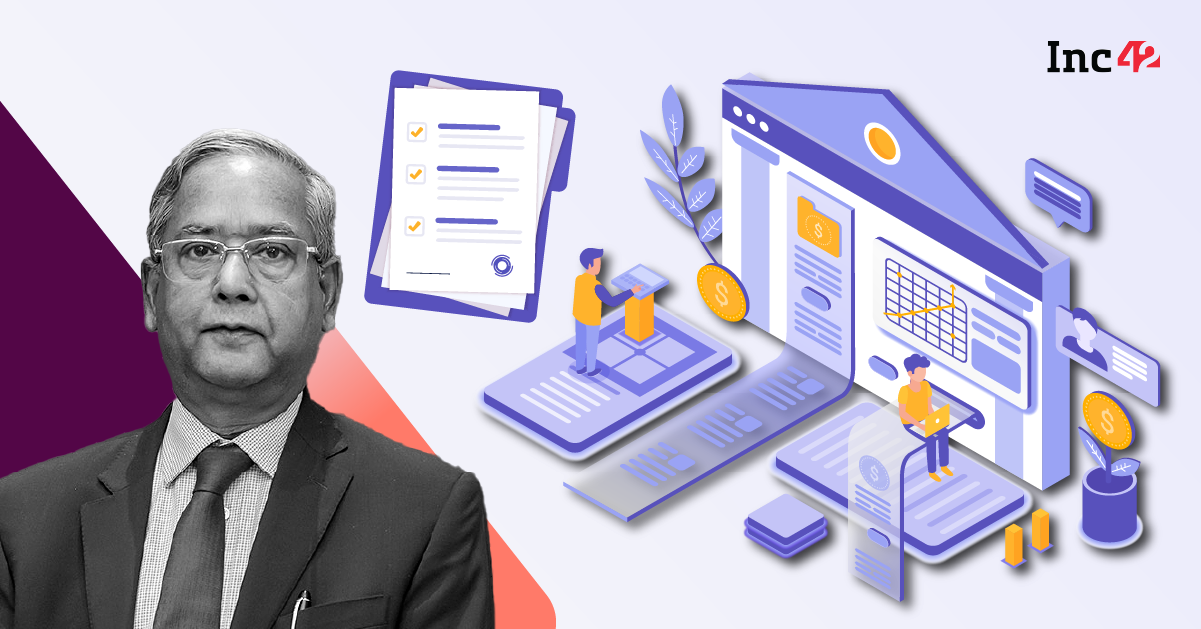The fintech industry needs to engage with academia first to ensure a better regulatory outcome, said former SEBI chairman UK Sinha
Try and understand the regulators’ perspective as they need to consider the risks involved such as investor protection, financial stability, data privacy or other macro implications, Sinha told the fintech community
Does crypto serve any social or economic purpose? If it doesn’t, it cannot be a mass product. Crypto is yet to pass this test
“If you look at SEBI, you would see it was among the first to become proactive, seek advice, have consultations and make changes… It’s an indication that SEBI realises the role of innovation,” said UK Sinha, the longest-serving chairman (Ex) of India’s capital markets regulator SEBI after DR Mehta, during his fireside session at Inc42’s Fintech Summit 2022.
Whether it is the RBI mandating non-bank PPIs (prepaid payment instruments) not to load their wallets and cards from credit lines, lack of clarity on private crypto, or SEBI mulling stricter IPO norms, Indian regulators are always at loggerheads with homegrown startups.
On their part, startups often blame the regulators for failing to catch up with innovation and implement tech-friendly norms, thus hindering the entire tech ecosystem of the country. Although dialogues have taken place among all stakeholders, outcomes are still awaited, and quick resolutions seem a far cry.
At Inc42’s Fintech Summit, UK Sinha was more candid about the regulators’ dilemma in his conversation with Siddarth Pai, founding partner of 3one4 Capital. He spoke about the issues at length, giving the other side of the story and asking startups to understand the regulators’ perspective.
Sinha, a Bihar cadre IAS officer from the batch of 1976, also served as the joint secretary in the ministry of finance and the chairman of the Association of Mutual Funds of India. Apart from heading numerous committees, he was also instrumental in drafting the SEBI Amendment Act 2002 and the PFRDA Bill in 2005.
During his years at SEBI, the market regulator had taken stringent measures against several industry giants such as Sahara India, DLF, the Saradha Group and National Spot Exchange to safeguard investor interest.
Here are the five key takeaways from his session held on July 1, 2022:
Understand Regulators’ Perspective
Sinha agreed that regulators must encourage innovation and move forward but said that one could not possibly ignore the flip side of the story. “We also need to understand the risks that come along. This could be about investor protection, financial stability, data privacy, or other macro implications that may impact market stability,” Sinha said.
That is how a regulator usually thinks, keeping investor protection at the centre of its focus, he added.
Citing an example, Sinha said that a particular group was in the habit of ‘deciding’ who would be its regulator. The group initially worked as a non-banking finance company (NBFC) and raised tonnes of money from retail investors. When the RBI acted against it, it suddenly decided that it would have SEBI as a regulator. So, the same deposits were converted into optionally fully convertible debentures, thereby making them securities.
It took SEBI some time, but it acted against the group. The matter was escalated at all levels, including the Supreme Court. But the story did not end there. Even today, this group is operating, and this time, it has chosen the Registrar of Companies as its new regulator under the Multi-State Co-operative Societies Act.
“So, I fully acknowledge that all of you are very well-intentioned, and you have no bad intentions in your mind. But kindly understand that the regulator has to deal with such companies,” he said.
Engage With Academia, Regulators
“I advise that the fintech industry and other industry segments should actively try to engage with regulators and academia. What you, as an industry, are telling the regulator versus what you are saying supported by research-based findings will have an entirely different impact. I think the industry has to work towards it,” Sinha said.
Speaking on how regulators prioritise working proactively on various reforms, Sinha recalled the concepts of account aggregation and cash flow-based lending and the detailed roadmap laid out for those under his chairmanship of the RBI-constituted Expert Committee on MSMEs. The committee was set up in January 2019 and submitted its report in June that year.
Those suggestions were implemented, by and large, he said. “Our idea was to use the GSTN data because a lot of data is available there, and it can help assess a borrower’s creditworthiness. But there was an issue; the Department of Revenue under the finance ministry had reservations about this.” The issue was resolved after multiple discussions where they showed a lot of patience, and the concerns were addressed.
“The idea of ‘trade with caution’ can work in two entirely different scenarios. One is that as an industry player, you are trying on your own and feeling frustrated. The other scenario is where you actively engage with the academia, regulators and the government mechanism. I will advise the latter,” said Sinha.
How Regulators Catch Up With Innovation
According to UK Sinha, a time comes when innovation is ready but regulators are not.
“I faced many such situations during my tenure at SEBI. There was a company that wanted to provide order matching for debt on its platform, and we examined it thoroughly. However, we realised that it was actually trying to run a stock exchange without a licence,” he said.
So, SEBI had to say no, but gradually, the situation emerged. Now bonds or even derivatives can be traded on exchanges.
“Therefore, my suggestion here would be that patience is essential. If you have come up with a very good idea, get it validated by some researcher or industry group and then approach the regulators or the government,” he added.
Never be in a complaining mood about this. Try to understand the regulators’ minds, and then put across your ideas. It may get delayed; it may sound onerous. But it’s always best if you attempt to have a sustainable business model, rather than a business model where you can make some good money and then create problems for the rest of the economy, observed Sinha.
Crypto Is Yet To Prove Its Utility As A Mass Product
Sinha was equally candid about private cryptocurrencies and addressed the elephant in the room. It’s not just about India, he said. Take a look at the advanced economies, and the picture is not very clear. People are still trying to figure out how to handle this animal.
For example, the Bank for International Settlements (BIS) came out with a report in February this year, followed by another in March from the International Organization of Securities Commissions (IOSCO), of which SEBI is a member. Globally, the matter is still open. So far, they have raised questions about the risks and the problems that may emerge. So, the crypto question has not been satisfactorily answered anywhere in the world.
“Now, let us think of crypto or any other innovation from another point of view… Is this particular innovation serving any social or economic purpose? If it is not, it cannot be a mass product. Crypto is yet to pass this test.”
What’s Wrong With Tech IPOs
Last year, dozens of startups went for public listing, including veterans like Zomato and Paytm. However, most of these are not doing well post-IPO. Asked about what had gone wrong, Sinha said that as occurred back in 1992 one should not be thinking about the regulator deciding the prices. Instead, one should discuss how regulators can ensure that good quality and adequate data is provided to investors in time to help them make informed decisions.
“There is some need for thinking on the part of SEBI. But I think more is required from investment bankers and other stakeholders. More high-quality data is needed for investment purposes,” he said.
The RBI recently published a report that showed huge growth in IPO financing in FY 2021-22. From November 2021 to May 2022, seven startup were listed, raising INR 38,170 Cr, with an average oversubscription rate of 40 times and 4 of them registered gains on the day of listing. Their post-listing performance has, however, moderated significantly. And, at end-May 2022, six of the eight startups listed during 2021-22 were trading at a loss as compared to their listing prices, according to the RBI’s report.
There is short-term financing to push the huge amount of growth. It also showed that people were borrowing heavily and the central bank was trying to curtail it. This is another area to look into and warn potential investors, added Sinha.










